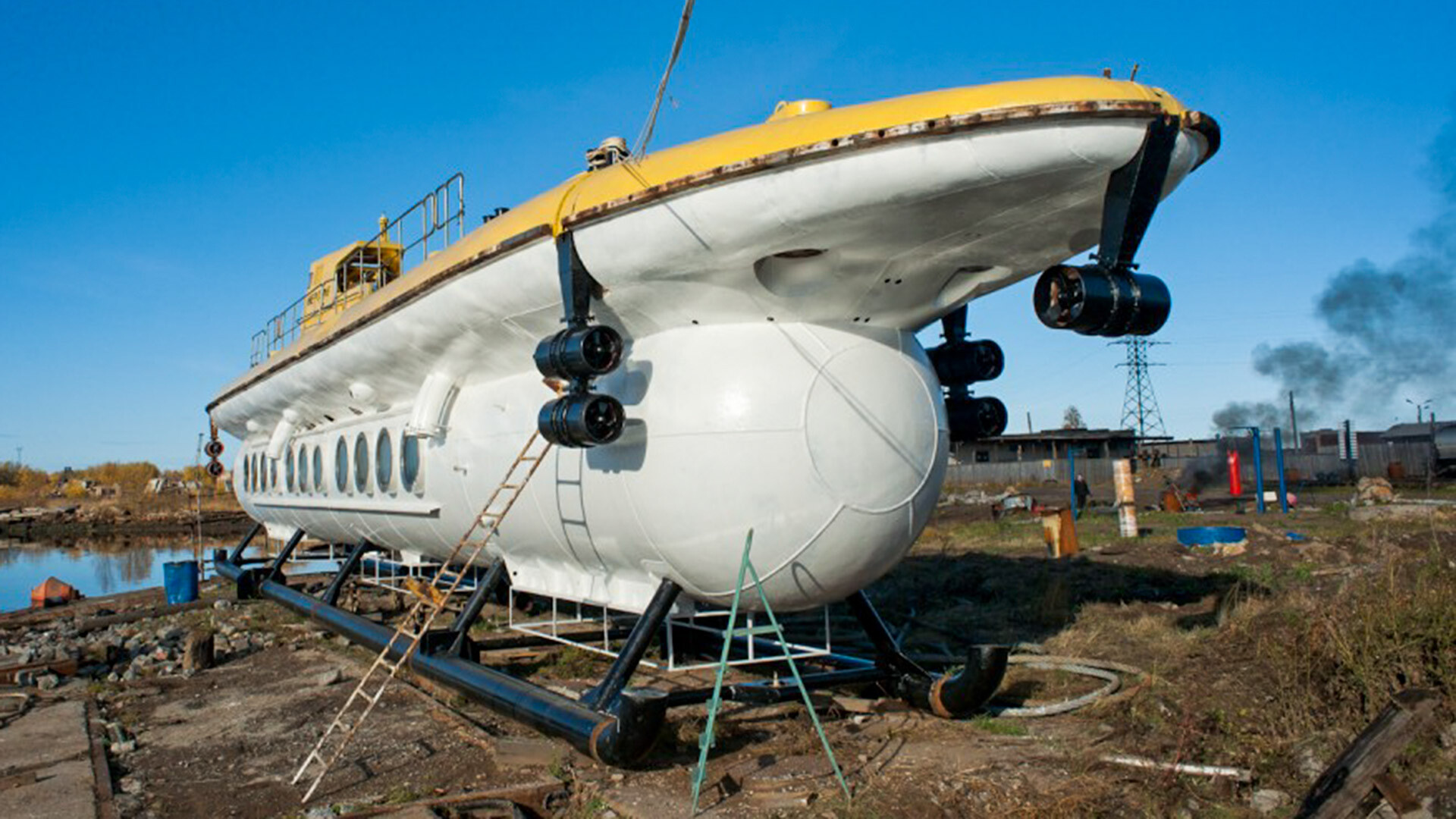
After World War II, the Soviet Union became an acknowledged world leader in the design and manufacture of military submarines, but it was only in the late 1980s, on the eve of the collapse of the country, that they thought about creating tourist submarines.
The first Soviet excursion submersible, ‘Neptun’, was launched in Severodvinsk on September 18, 1990, and, in summer of the following year, it was tested in the White Sea.
The length of ‘Neptune’ was 28 meters and width - 4 meters. Diving down to a depth of 40 meters (maximum - 60 meters), the submarine could reach speeds of up to 2 nautical knots (3.7 km/h). However, it was never put out to sea in rough weather with waves over two points.
The crew of the ship consisted of three people: the captain-pilot, a mechanic and a guide-steward. ‘Neptune’ could accommodate up to 40 passengers, at the service of which were 22 portholes. The duration of the underwater excursion was one hour.
The tourist submarine, tested in cold northern waters, was expected to operate in the warm Caribbean Sea. For this purpose, in 1992, the Rubin Design Bureau and Severodvinsk Machine Building Plant (Sevmash) signed an agreement with Italian company Cortina, which owned a tourist complex on one of the islands in the Caribbean.
After several years of work in the exotic region, ‘Neptune’ returned to its native North for repairs and upgrades. But, the owners decided that the profit from the project was no longer paying back the expenses, so they gave up in the end.
The first (and last) Soviet tourist submarine was left to languish in Severodvinsk for many years. In recent years, however, there has been an idea to move it to Moscow and turn it into a cafe-museum.
If using any of Russia Beyond's content, partly or in full, always provide an active hyperlink to the original material.
Subscribe
to our newsletter!
Get the week's best stories straight to your inbox